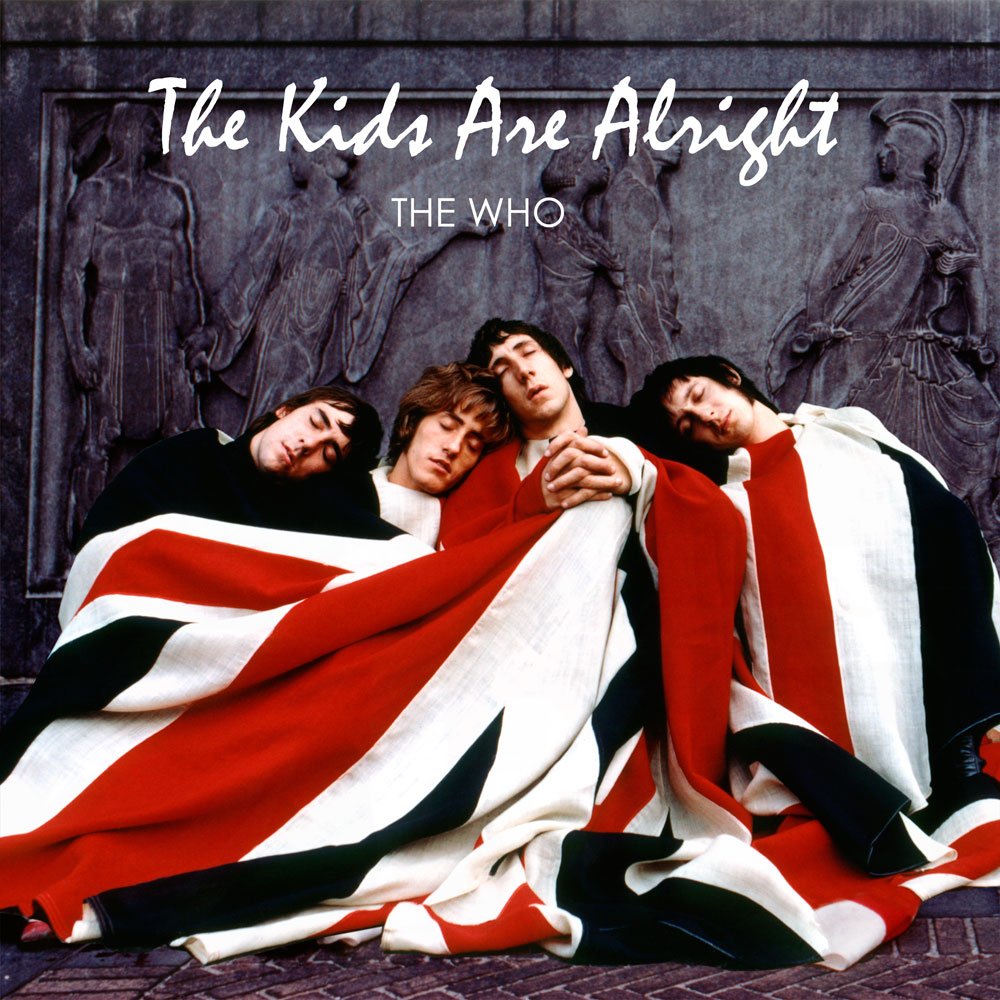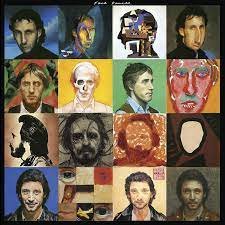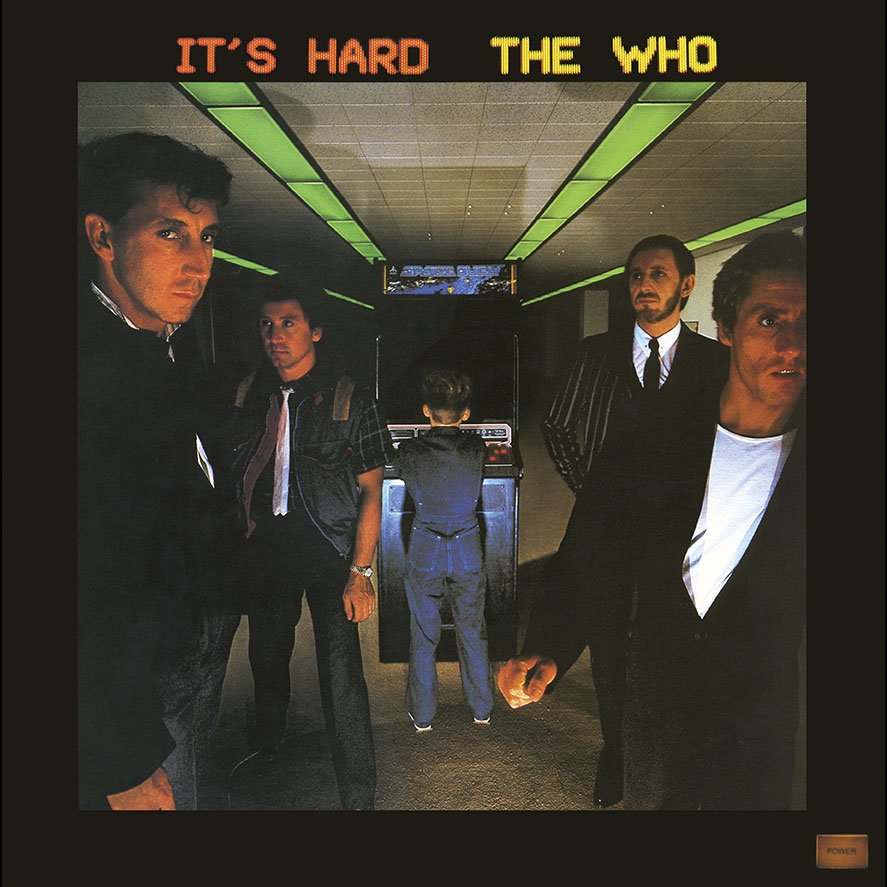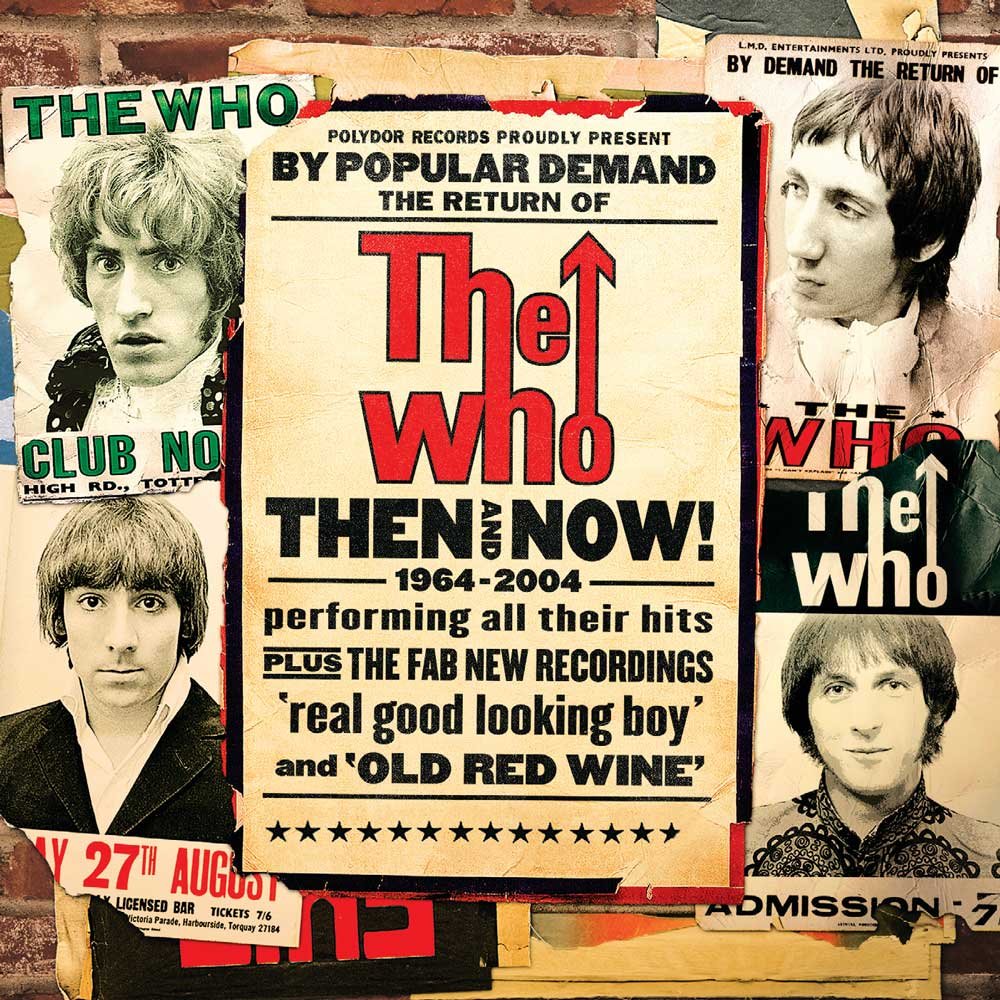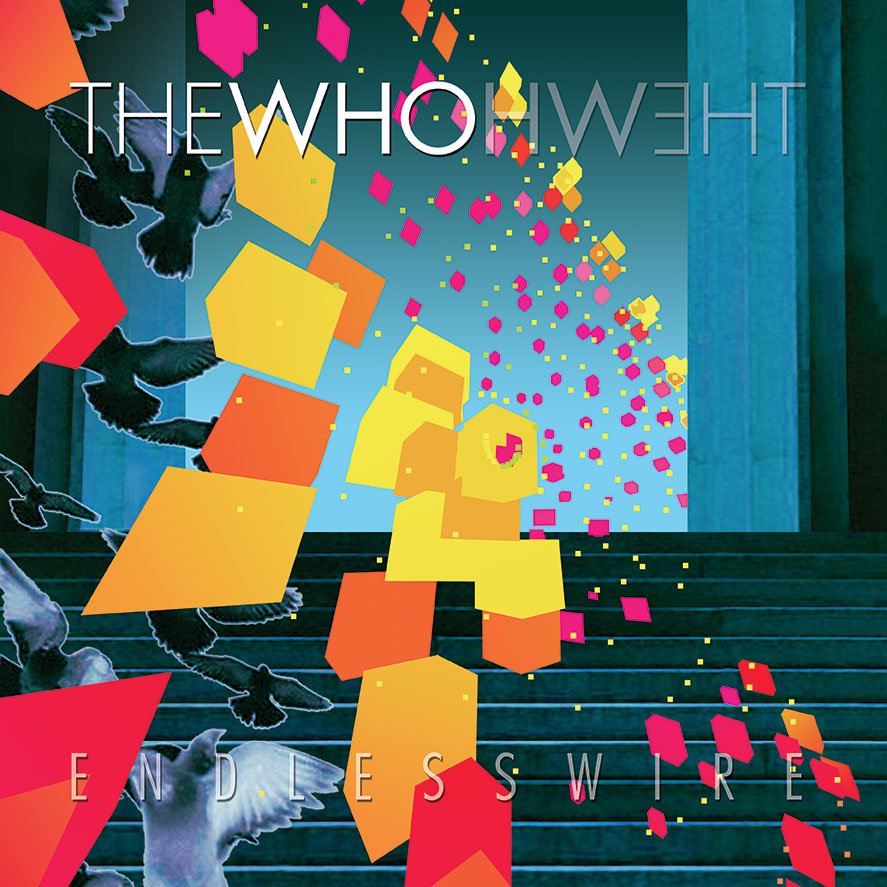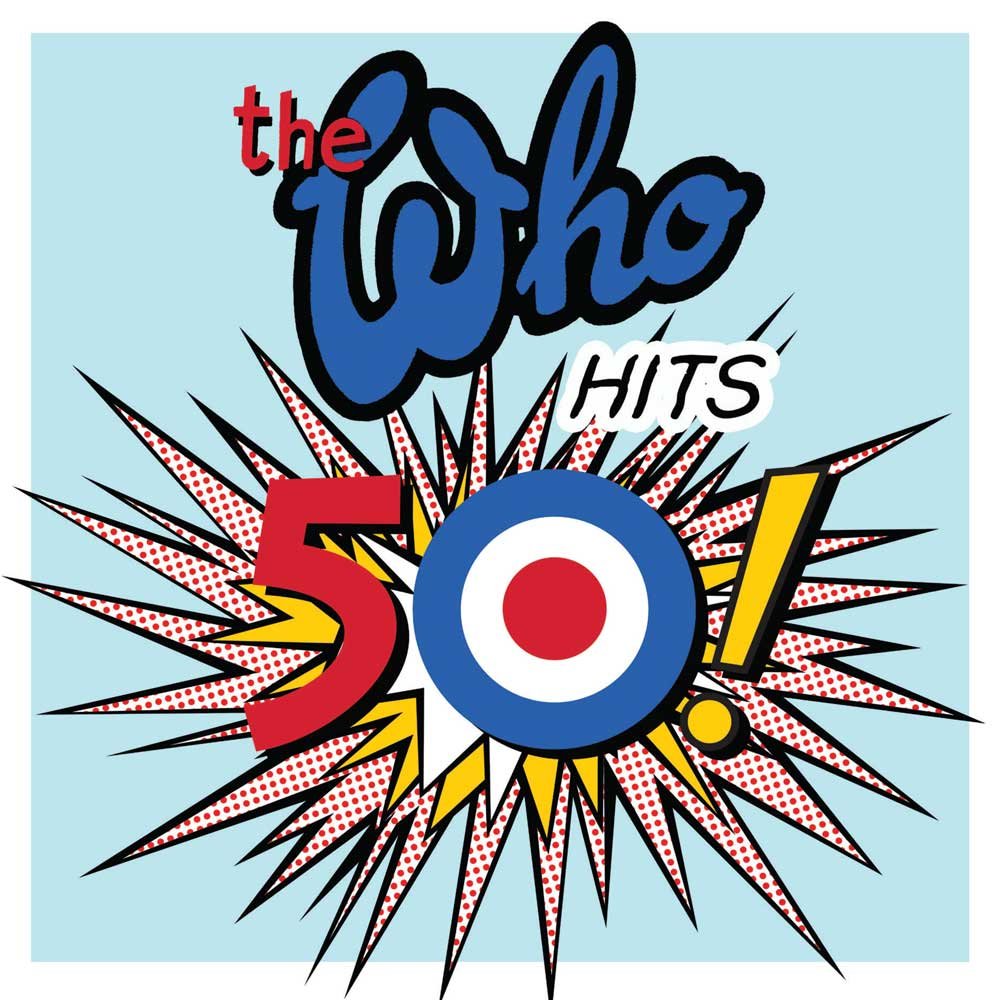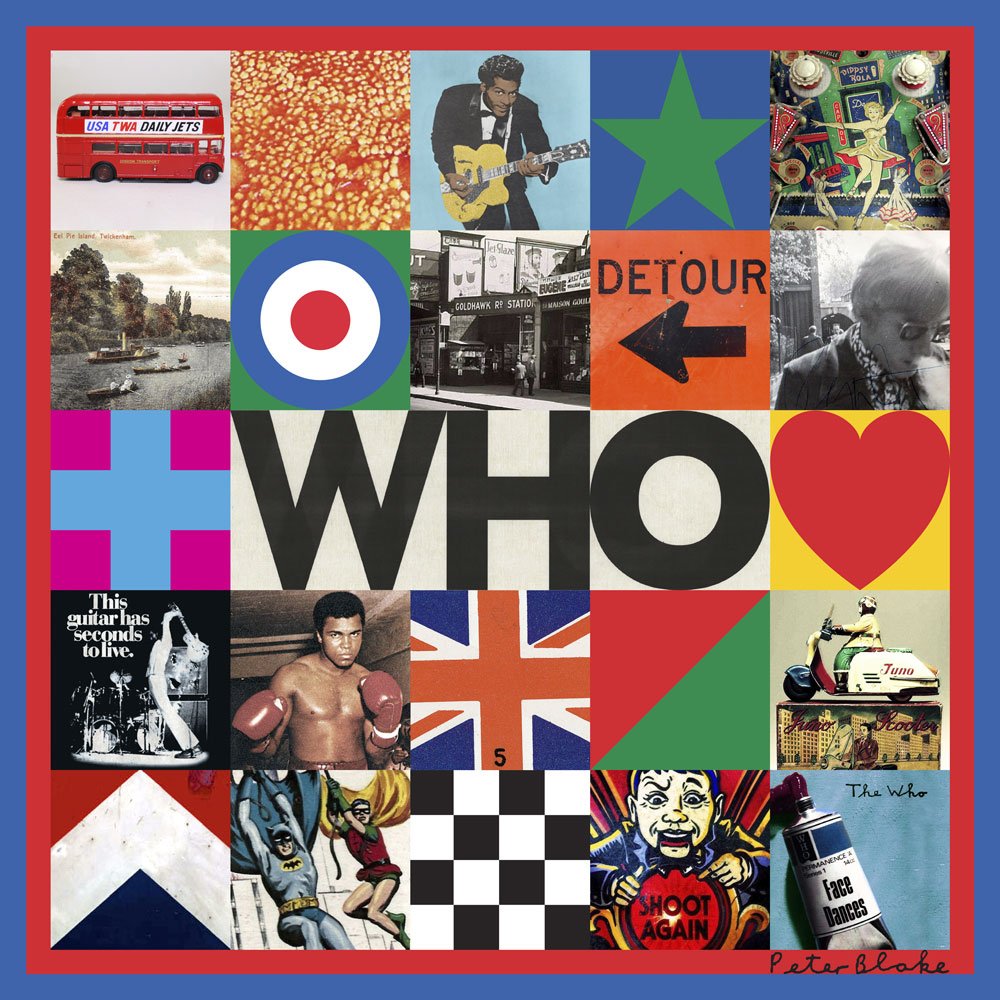My Generation: A Deep Dive Retrospective of The Who
Click below on the streaming service of your choice to listen to the playlist as your read along.
Among the icons of the classic rock era of the 1960s and ‘70s, The Who are one of the longest lasting. Pioneers of the unabashed rock ’n’ roll approach to life, performance, and art, mixing film with music, progressive rock, and concept albums, this London quartet has had few peers.
I admit I was only a casual fan of The Who. I hit my teens just as they first folded and I was initially into pop and then new wave, so their sound wasn’t of much interest. My early school days were, of course, marked by often hearing “Who Are You” and “You Better, You Bet” on the radio, and I even ended up with a 7” copy of, “Athena,” along the way. I saw parts of Tommy and Quadrophenia on TV, which didn’t do much to draw me to them (I found the scene with Tina Turner terrifying). I didn’t get into classic rock until my late teens but still never moved past the hits when it came to The Who. I eventually picked up via Columbia House Record Club their live 1984 album, Who’s Last, and when I had a brief stint as a DJ in the early ‘90s and needed some classic rock tunes, I picked up the CD, Who’s Greatest Hits (issued in ’83). So, I never dove into their albums and really only ever have had a surface knowledge of the band.
The Playlist
“Zoot Suit”
“The Good’s Gone”
“The Ox”
“Instant Party”
“So Sad About Us”
“Mary Anne with the Shaky Hand”
“Sunrise”
“Dr Jekyll & Mr Hyde”
“1921”
“Sally Simpson”
“Getting In Tune”
“The Dirty Jobs”
“Is It in My Head? ”
“Glow Girl”
“Naked Eye”
“Imagine A Man”
“Success Story”
“905”
“Love Is Coming Down”
“How Can You Do It Alone”
“Another Tricky Day”
“One Life’s Enough”
“One At A Time”
“Old Red Wine”
“Fragments”
“Be Lucky”
“All This Music Must Fade”
Therefore, The Who seems like a natural and long overdue subject for a Ceremony ‘deep dive’. We’ll explore a playlist of album cuts and B-sides that side-steps the hits in order to learn of the band’s evolution. We’ll discover the four eras of the band that marked their musical evolution, and also how, behind the singles, there were many solid tracks but really, in the end it truly was the hits that defined The Who.
Part 1: Mods
“Zoot Suit” \ Non-album single by The High Numbers (1964)
“The Good’s Gone”; “The Ox” \ My Generation (1965)
“Instant Party” \ B-side to “Substitute” (US single) (1966)
The Who came out of the Acton County Grammar School in west London, of which Pete Townshend, John Entwistle, and Roger Daltrey were all attendees. Pete and John were friends and formed a jazz act in the late 1950s, though they already had their ear attuned to the emerging rock sounds. Daltrey, meanwhile, was a combative and rebellious sort, and found himself expelled at the age of fifteen, having to work construction while also fronting a rock band, The Detours.
Roger recruited John into The Detours as John had moved from playing the French Horn to the bass. John then brought Pete in as a second guitarist in 1961, with Roger leading the quartet as lead guitarist and vocalist. They evolved through surf and jazz sounds towards a rougher, garage rock sound, influenced by the early modern rock builders, some of which they’d played in an opening slot. Learning of another band using Detours in their name, they decided to change to The Who, suggested for its irreverence by Townshend (and his roommate) and ultimately chosen by Daltrey. After cycling through several drummers, they recruited Keith Moon, impressed with his power and energy (uh yeah, no kidding).
The band had also been cycling through managers, and while they’d developed a local following and were playing regularly, they hadn’t signed to a label or recorded anything. Their new manager, Peter Meaden, was taken with the emergent mod movement. Originally coming out of jazz culture, Mods (short for ‘modernists’) were spreading out of London across England in the early ‘60s, marked with their fashion sense (tailered suits, Nehru jackets), use of scooters decked out with mirrors, and a love for early jazz, blues and R&B. Meaden convinced The Who to call themselves The High Numbers and record a single, “Zoot Suit,” for the label, Fontana. Everything about their music, sound, and fashion was contrived to appeal to mods, but the single didn’t click. However, the styles did continue to influence the band, and mod symbols such as the Union Jack and the Royal Air Force roundel became closely associated with the band as much as broader mod culture.
Mods and their decked out, mirrored scooters.
Returning to The Who moniker, the band changed to Kit Lambert and Chris Stamp as managers. They were filmmakers who made a short film out of The Who’s reputation-building, energetic, and dramatic stage show. Leaning into the R&B sound that was the foundation of the British Invasion, the band ramped things to a frenetic conclusion by destroying their instruments. Each member’s distinctive stage antics were also emerging, with Daltrey slinging the mic around with reckless abandon, Townshend windmilling on his guitar or machine-gunning it towards the audience along with dramatic leaps and scissor-kicks, and Moon flinging his arms and sticks around in manic animation, not to mention with a variety of facial expressions (he was an inspiration for the Muppet drummer, the always entertaining, Animal).
The Who in 1964: John Entwistle, Roger Daltrey, Keith Moon, and Pete Townshendg
Lambert and Stamp got the band signed to the US label, Decca Records (who released them in the UK via their imprint, Brunswick). The first release was the 1964 single, “I Can’t Explain,” produced by Shel Talmy, who had produced fellow mods, The Kinks. The single built an underground following which led to a TV appearance and eventually a UK top ten for the single. They then repeated that success with the single, “Anyway, Anyhow, Anywhere,” continuing to challenge the conventions of mainstream pop with their inventive and aggressive take on R&B structures.
In 1965, the band released their debut LP, My Generation, driven by the title track as the lead single which reached #2 in the UK chart. Along with the later single, “I’m A Boy,” it remains The Who’s highest charting single in the UK or US, never attaining a #1 hit. (My native Canada has pushed two of the band’s singles, “Happy Jack” and “Squeeze Box,” to #1 – and yes, I’m unimpressed and dismayed that those were the two tunes to break through.) The album reached #5 in the UK album chart and, while most of their peers started mostly as cover acts, The Who achieved one of the more remarkable debuts with an LP comprised three-quarters of originals. The LP was then issued in the US in 1966 as, The Who Sings My Generation, but it failed to take hold.
“My Generation” was a genre defining track. The Who called their sound, ‘maximum R&B,’ and it was a part of what would later be labelled, ‘garage rock.’ The song’s rough-edged sound and staccato vocal delivery captured the spirit of a youth movement that was asserting itself in western culture, readying itself to create a social sea-change over the course of the ‘60s, with rock music being a primary vehicle. Its lyrics announced the defiance and forcefulness of the new generation. It was a track that helped spur the rebellious spirit of rock and helped create a line that led to the punk movement a decade later, partly tied to a revival in mod culture.
Later singles were issued from the album in ’66, but without much promotion, “A Legal Matter,” “The Kids Are Alright,” and “La-La-La-Lies” failed to achieve the same success as the title track. However, a non-album single issued in the interim, “Substitute,” reached the UK top ten. While Daltrey was the lead vocalist, Townshend and Entwistle also pitched in and the band utilized harmonies, the signature sound of the British Invasion. “The Good’s Gone,” “The Ox,” and “Substitute’s” B-side, “Instant Party,” all revealed the band’s mix of early ‘60s psychedelia, frenetic rhythms, harmonic melodies, and edgy guitar lines. “The Ox,” an instrumental Entwistle tune (the tune shared his nickname) built around a furious, surf-style rhythm, in particular, gave early evidence of what they had in Keith Moon, soon to be recognized as one of the most talented, entertaining, and influential drummers of all time.
Early in the band’s tenure, leadership had been wrested away from Daltrey, whose belligerent, streetwise style was not conducive to a calm band culture. Musically, Townshend had taken leadership with songwriting, though the rest of the band also pitched in considerably, especially John. The result was variety and inventiveness in their song structures for the time. Regardless, acrimony and combative behaviour would continue to be a pervasive aspect of the band’s makeup.
“So Sad About Us” \ A Quick One (1966)
“Mary Anne with the Shaky Hand”; “Sunrise” \ The Who Sell Out (1967)
Until now, I’ve only known “So Sad About Us” as a song by The Breeders, so I’m pleasantly surprised to discover it was an album track from The Who’s second LP, 1966’s A Quick One. It continues to show the separation between modern rock and classic rock is ever so slim. A Quick One was titled after a lengthy, story-like track, “A Quick One, While He’s Away,” drafted to fill space on the LP. The track was the first to allow Townshend to explore the combination of music and story that would soon become the band’s hallmark.
The UK album featured no singles, but “Happy Jack” and “Pictures of Lily” were issued as separate singles, with both reaching the UK top ten. In the US, the album was titled Happy Jack, with the single added as the title track. The LP reached #4 in the UK, surpassing their debut. In the US, they were gaining their first attention. The album cracked the top 100, “Happy Jack” reached the top forty in the singles chart, and they received acclaim for their shows after a short tour, including a memorable appearance at the Monterey Pop Festival. Overall, the album was musically similar to the first, though a little more polished and featuring more pop moments.
The front cover of The Who Sell Out with Pete and Roger, who is sitting in a tub of beans. The back cover included similar photos of Keith and John.
The next LP, The Who Sell Out, was released in 1967 and was a tribute to the recently outlawed pirate radio industry in the UK, a network that had originally helped promote The Who before mainstream radio picked them up. The album included interludes of radio chatter and promos. While most of the LP shifted from garage rock to folk-rock and psychedelic sounds, the thematic element tying the LP together gave indications of where the band was headed. Townshend had been working on songs as part of a project called Quads, from which several released tracks to that point had been its cast-offs. While The Who Sell Out was solid, if not unremarkable, it did offer the band’s next great addition to their growing list of legacy burnishing tracks, the psych-rock masterpiece, “I Can See for Miles.”
“Dr Jekyll & Mr Hyde” \ B-side to “Call Me Lightning” (1968)
By 1968, the British Invasion had come and gone in America and left its indelible mark on the music landscape. The Who had been in the mix but not at the forefront. None of their three LPs had cracked the top forty in the US and only “Happy Jack” and “I Can See for Miles” had done so on the singles side, though the latter had reached the top ten. Regardless, in the UK the band was now established, with seven top ten singles and two top ten albums plus a top twenty.
There were no albums issued in 1968, but three singles were issued. “Call Me Lightning” was a US single that reached the top forty and on its B-side was the track, “Dr Jekyll & Mr Hyde.” It was an example of the band’s darker, more dramatic, and somewhat campy side – usually from the pen of John – which was first heard on the second album in the track, “Boris the Spider.” “Dogs” was released in the UK (with “Call Me Lightning on the B-side) and was another top forty hit. The final single of the year was another top forty hit and this time on both sides of the ocean. “Magic Bus” (Jeckyll & Hyde was the B-side in the UK) was in the psych-rock style and gave the band another of their classic tracks.
Part 2: The Storytellers
“1921”; “Sally Simpson” \ Tommy (1969)
The last half of the 1960s saw the LP assert itself over singles as the primary vehicle for rock music. And while concept albums that linked the songs to a theme had been around for decades, in rock music it was nascent, inspired by the loose premise of The Beatles’ Sgt. Pepper. The Who – specifically Pete Townshend – had been increasingly flirting with more dramatic and thematically developed music. Tommy, their next LP in 1969, would delve into the idea wholly and create what is widely regarded as the first rock opera.
Inspired by Indian spiritual teachings, Pete fashioned Tommy around the story of a “deaf, dumb (i.e. mute), and blind kid,” who goes on to improbably become a pinball champion, who “Ain't got no distractions / Can't hear no buzzers and bells / Don't see no lights a-flashin' / Plays by sense of smell.” After his rise, Tommy is brought down by hubris.
Townshend was establishing himself as a riff king, and on Tommy the repeated musical passages became the hallmark of the album. Interspersing instrumentals between the narrative tracks, the album became legend thanks to many keystone songs: “Christmas,” “The Acid Queen,” “Underture,” “Pinball Wizard,” “Go to the Mirror!,” “I’m Free,” and “We’re Not Gonna Take It.” The LP reached #2 in the UK and #4 in the US and became the band’s first big selling album. “Pinball Wizard” was a UK top ten and US top twenty single and became one of their signature songs. “See Me, Feel Me” was released as a single in 1970, being a combination of “Overture” and passages of “Go to the Mirror!” and “We’re Not Gonna Take It”, and reached the US top ten.
Musically, the album was less psychedelic and folk inspired, and instead worked strong rock chords around catchy melodies, dramatic build-ups, and more emotional turns. It was a maturing evolution of the band’s sound, moving from the raw, R&B based, and psychedelic tinged sounds of their first three LPs into something more distinctive, big, and brash. One symbol of their maturation was they’d mostly stopped destroying their instruments at the end of every show by the time of the Tommy tour.
In August, The Who were one of the many legendary acts to perform at the historic Woodstock festival, playing several tracks off Tommy. Though delays led to their performance occurring at 5am on Sunday instead of Saturday night. In May of 1970, they issued their first live LP, Live at Leeds, which is recognized as one of the top live rock albums and reached the top ten in the US and UK and continued to build The Who into one of rock’s preeminent acts. It also featured their exemplary cover of Eddie Cochran’s, “Summertime Blues,” which was another hit single for the band. In 1970, they also released the non-album single, “The Seeker,” yet another high charting entry on both sides of the ocean.
Roger, in all his fringed glory, playing with the band in the early Sunday morning hours at the Woodstock Festival.
“Getting In Tune” \ Who’s Next (1971)
If critics and fans were impressed with Tommy, The Who apparently were just getting warmed up. In August 1971, they released Who’s Next, one of the best rock albums ever issued. Spinning out of an aborted rock opera project, the album instead delivered a list of utterly fantastic tunes.
First, there was the trio of singles easily considered some of the most recognized and cherished of the classic rock cannon, “Baba O’Riley,” “Behind Blues Eyes,” and “Won’t Get Fooled Again.” In the next tier of just ‘amazing’ rock songs, there was “Bargain,” “Love Ain’t for Keeping,” “My Wife,” and “The Song Is Over.” What was left? Just a couple more excellent tracks, “Getting in Tune,” and “Going Mobile.” And one more thing, Roger Daltrey gained entry to rock god status with the most famous yell in rock history in “Won’t Get Fooled Again.”
Gone was the psychedelia, folksy ballads, raw aggressiveness, and distracting interludes and interjections. Who’s Next was a collection of polished, epic, progressive, and sophisticated songs. Moon had already made his mark since any Who song was known for its forceful and lively beats, and this album saw him fully in his element. As the other half of the rhythm section, Entwistle was never dull, keeping the songs spirited with his intricate basslines. Of course, Townshend kept delivering catchy guitar riffs around which Daltry worked his vocal power. The album also offered one of the best and well-known early examples of the use synthesizers.
Who’s Next gave The Who their one and only #1 album in the UK, a feat they’ve never achieved in the US, where the LP reached #4. And despite their legendary status in rock history, none of “Won’t Get Fooled Again,” “Behind Blue Eyes,” or “Baba O’Reilly” charted well as singles, with only the first just eeking into the top ten in the UK and US. The more complex, longer, and brash tracks clearly were ahead of what audiences were prepared to support. However, as FM radio championed such music, The Who still found a strong following.
At the end of 1971 there was the release of Meaty Beaty Big and Bouncy (references to each of the band members, Daltry, Moon, Entwistle, and Townshend respectively), a compilation album of many of their hits to date. While there had been a couple compilations previously, this arrived at a time when the band had a critical mass of big hits and fame, and the result was an album that reached the top ten in both the UK and the US.
“The Dirty Jobs”; “Is It in My Head?” \ Quadrophenia (1973)
The Who had now been together for almost ten years, and since their first releases had been touring constantly. It was time for a break. And as always, acrimony around management, money, behaviour, creative direction, and their conflicting personalities created more barriers to productivity.
In 1972, they issued the single, “Join Together,” which achieved a top ten in the UK. There was another, less successful single, “Relay.”
Townshend continued to pursue more ambitious projects to mixed responses from his band mates. Eventually, they reconvened and recorded their next rock opera, an album about their roots and the battles between mods and rockers in 1960s England (specifically, Brighton). And while Pete had always carried the main load of songwriting in the band, this was the first LP to be completely composed by him.
Quadrophenia, released in ’73 and like Tommy – and almost required of a rock opera – was a double album. After the embarrassing riches of hits and legacy burnishing tracks of Who’s Next, the album was surprisingly bereft of hits, instead subsuming the track list to the narrative and ambient context of the story. But of course, there was “Love Reign O’er Me,” another epic rock song any band would kill to have in their repertoire, and yet another Who entry into the list of greatest rock songs of all time, with “5:15” also tracking close behind.
“The Dirty Jobs” and “Is It in My Head” are tracks that exemplify the sound, mood, and style of the band on the album. More nuanced compositions with a broader instrumental palette that included more strings and horns, allowed the band to develop their sound like never before. They even built their own studio to support the recording, but it was still beset with challenges, not the least of which was a falling out with their manager/producer, Kit Lambert.
The album reached the top ten in the US and UK, and the singles, “5:15,” “Love Reign O’er Me,” and “The Real Me,” all failed to chart highly. The shift towards being an album concept band left The Who less successful as a singles act, which was not uncommon for many of the most respected and revered acts of the classic rock era. Like their peers, they could pack a stadium with no problems and deliver the goods to an adoring audience, and especially now that they were packing their albums with stadium ready rockers.
“Glow Girl”; “Naked Eye” \ Odds & Sods (1974)
Tina Turner as ‘The Acid Queen’ and Roger Daltrey as ‘Tommy’ in the film, Tommy.
1974 was a quiet year for the band and new music as they sunk their efforts into the film adaptation of Tommy. The movie was released in 1975 and created a new dimension for The Who as film now became part of their repertoire. Roger played the lead role, Moon had a small part, and the band played themselves for in-film performances. Indeed, while many bands had concert films and documentaries, the only rock acts to that point who had broadened their output into original films were The Beatles and Elvis Presley (though really, did Elvis help or hurt his image with his films?). With an all-star cast – Tina Turner as the Acid Queen!? And Jack Nicholson and Ann-Margret, soon reunited after their memorable turns in 1971’s Carnal Knowledge – Tommy was a critical and commercial success and has become a cult classic.
In October 1974, the band released a compilation album, Odds & Sods, that included many unreleased and B-side tracks from early in their career. It was an interesting juxtaposition to their current incarnation, reminding of the band’s urgent, unpolished, and edgy sound of their early years. Two singles were released from it, “Postcard,” and “Long Live Rock,” the latter being the title track for the abandoned rock opera that eventually became Who’s Next. The B-side to “Postcard” was the track, “Pure and Easy,” an excellent track that over time established itself as one of The Who’s finer tracks and is a favourite of mine.
This playlist selects two lesser-known tracks. “Glow Girl” was a 1968 cast-off from an unfinished album in the time leading up to Tommy. It related more to their prior sound than the one they were striving towards on the new album. “Naked Eye” was also developed in the 1968-69 period, and then recorded in 1970 for an eventually abandoned EP. It clearly fits with the evolution into their concept album sound, and was a track that could have easily been selected for a single.
Odds & Sods comprised a healthy list of great tracks and gave The Who yet another UK top ten and US top twenty LP. However, while it revealed the depths of the band during its most creative and productive period, it also served as a bookmark since, aside from a few huge hits, the band never again achieved such lofty levels of artistry.
Part 3: Adversity
“Imagine A Man”; “Success Story” \ The Who by Numbers (1975)
Members of The Who were never personally close and regularly clashed over the band’s direction and purpose. Conflict and combat had been a regular feature of their culture. Now, riding high on success and known for their progressive, rock opera projects, disagreement continued as the band – in particular Daltrey and Townshend – debated their next move. Not helping things was Pete was tapped out and battling writer’s block.
The Who thus cobbled together songs without their usual cohesiveness. The band was distracted, and the results showed it. While The Who by Numbers was a success, the songs were more pop-oriented, less dramatic, and while well-played and crafted, lacked the bombast and career-defining quality of their past three albums.
“Squeeze Box” was the hit single. Not a bad song, but not one commensurate of the band’s stature. It reached the top ten in the UK and came just short in the US. The second single, the disjointed, “Slip Kid,” failed to chart when released as a single in the US.
Oddly, when you push past the singles, there were many solid tunes. “Dreaming from the Waist” had The Who’s classic energy and bombast, and “Imagine A Man” was in the style of the band’s consummate blend of ballad and operatic turns. “Success Story” was a John Entwistle tune and rode a catchy rhythm. Their bassist had contributed many tracks to the band’s discography and was reliable in offering different takes on their sound, which often for better but sometimes for worse, brought variety and intrigue to their song lists.
“905”; “Love Is Coming Down” \ Who Are You (1978)
After touring for The Who by Numbers, the group took a break from playing live. One of the catalysts for that decision was Keith Moon’s declining health due to his lifestyle. He had always been the wild one in the band, which was saying something, but who else had taken to blowing up hotel toilets with cherry bombs during their early tours? His addictions were now affecting his performance and hampered recording efforts once they reconvened in 1978 to record their next LP, to the point that the band considered firing him.
The three-year break from 1975 to 1978 between albums had been the longest of The Who’s career. It could not have happened at a more precarious time for a classic rock artist. 1976 saw the birth of punk and 1977 witnessed an explosion into the modern rock era. Disco was also dominating the charts along with sophisticated prog rock, slickly produced corporate rock, and the increasing rise of huge solo artists such as Elton John, David Bowie, Bruce Springsteen, and Billy Joel. The ability of any ‘60s originating artist would depend on their ability to adapt and stay relevant. Who Are You was an interesting response.
The Who’s eighth album was, in many respects, solidly based in their legacy sound. Not so much the dramatic elements of their rock opera LPs or as raw as their mod era, but still unmistakably anchored in The Who’s bombastic sound of tight rock chords, propulsive beats, and hooky turns. Yet, with tracks such as “Had Enough” and “Sister Disco,” pop structures and modern elements definitely made their way into the sound. And of course, there was the title track, a catchy, huge rock track that harkened back to their Who’s Next sound mixed with a modern, fresh pop style. “905” and “Love Is Coming Down” are album tracks that also exhibited the band’s attempts to freshen their style with contemporary, disco/corp rock twists.
The album was a hit, regardless its relative quality to the band’s legacy or the internal turmoil of the band’s politics and work habits. The album reached the top ten in the US and UK and “Who Are You” reached the singles top ten in the US and top twenty in the UK.
Who Are You was released in August 1978 and the next month Keith Moon died from an overdose of sedatives, ironically from a prescription intended to manage his alcohol withdrawal. The Who quickly indicated they would continue, and hired ex-Faces and Small Faces drummer, Kenny Jones.
Known for their high-energy shows, could The Who keep that going without their animated drummer?
“How Can You Do It Alone”; “Another Tricky Day” \ Face Dances (1981)
“One Life’s Enough”; “One At A Time” \ It’s Hard (1982)
If the prior period between their last albums had presented challenges for The Who, the next three-year gap did them no additional favours. New Wave, Post Punk, ska and reggae, and a resurgence of R&B to replace disco as the chart champion widened the variety of competition for rock’s share of the music audience. And while the 1980s did ultimately spell the death knell for the classic rock era, many of its remaining champions did manage a final, hearty gasp as the likes of David Bowie, Queen, Pink Floyd, The Kinks, and Paul Simon achieved some of their greatest, and final, commercial successes of their careers.
The Who did not equal the level of success of their peers, but neither did they do too badly. Also facing the task of recording without the drummer that had helped define their sound and image, the band now had to find their way among both internal and external challenges.
1979 saw the release of two movies that helped put wind in their sails. The first was a documentary and accompanying soundtrack, The Kids Are Alright. It included many live performances that reminded people of the band’s legendary performance style. The second was the Quadrophenia movie. The band, with Jones on the kit, recorded new material for the soundtrack to add to the original album tracks. The film, starring Sting (not quite yet the star he would become), traced the album’s original storyline about conflict between mods and rockers, and helped revive an interest in mod music and culture, most evident in the success of the punk band, The Jam. In the early ‘80s, I recall mods in my school, who wore mop top haircuts, coats with Union Jack patches and the RAF roundel on the back, and bowling shoes. The Who was prominent in their listening habits.
The Who then released their next two albums: Face Dances in March 1981, and It’s Hard in September 1982. They continued the work started on Who Are You in modernizing their sound by mixing in pop and new wave flavours. Moon’s outsized beats were not necessarily needed for such an approach, and they appeared to handle his absence in stride. The band held onto their essential rock sound, presented in a tighter, more straightforward fashion.
Success and hits continued, as both LPs reached the top ten in the US while Face Dances did so in the UK and It’s Hard just missed. The first LP issued two singles, and while “Don’t Let Go the Coat” didn’t chart well, the album’s marquis track, “You Better, You Bet,” reached the top ten in the UK and top twenty in the US. Not long prior, it would have topped charts in both countries, showing it was more difficult for The Who to establish their place in popular culture. With MTV launching in the fall of ’81, spurring an era of increased reliance on fashion and image for success, the macho, stripped down fashion of The Who became anachronistic.
It’s Hard released three singles over ’82 and ’83, with only the first, “Athena,” making a presence on the charts, though barely cracking the top forty in the US and UK. The second single was a US-only single and only reached #68, but over time, “Eminence Front” would become the album’s best known and most beloved track from the album. Sung by Townshend, in many respects it was by far the best example of the modern Who sound, melding old with new in a clever blend of rock and electronics. It was like a companion track to “Won’t Get Fooled Again,” in the way the keyboards played a central role to the song’s sonic signature, mixing with a booming beat and funky rhythms. Yet, despite being the best track the band had released in a decade, the song gained little purchase for The Who, waiting for later re-release as part of the band’s reunion resurgence to gain its well-deserved attention and appreciation.
With their star fading in the popular consciousness of the 1980s, The Who continued their internal adversity. Townshend was plagued by self-doubt, no doubt aided by a brief addiction to heroin. Also, tired of touring, he sought to make the band a studio only act, much like The Beatles had done. Daltrey and Entwhistle didn’t like the sound of that, and also accused Pete of saving his best songs for his solo work. Reaching an impasse, The Who declared their 1982 tour as their last ever, culminating in a Toronto show recorded for both a live recording and broadcast on TV (as not yet concert-going age, I remember watching it, enthralled to be able to see a concert from such an esteemed act happening literally a short distance from my house). And though work started for another, contractually obligated album, eventually the band chose to buy themselves out and announced in 1983 the end of The Who.
Part 4: Victory Laps
Retirement for The Who was short-lived. While Townshend and Daltry spent the ‘80s releasing solo albums, The Who also first reconvened for a performance at the 1985 Live Aid concert, and then embarked on a reunion tour in 1989, this time with the original trio filled out with additional guest musicians, including several celebrity cameos from the likes of Phil Collins, Billy Idol, and Elton John. Without new music to promote, and against the backdrop of rising genres such as hip hop, grunge, and acid house, The Who definitely appeared as a relic from the past, yet a very successful one as the tour reliably sold out arenas and stadiums.
Still kickin’ at Live Aid in 1985
Appearances and performances by the trio continued regularly – for their Rock and Roll Hall of Fame induction in 1990, for a contribution to an Elton John tribute album (the last recording to include Entwistle), for the encore of Daltry’s 50th birthday show at Carnegie Hall, and then a 1996 Hyde Park show followed by a brief tour to perform Quadrophenia in its entirety. Additional shows and tours followed into the early 2000s. On the eve of a 2002 US tour John Entwistle died of a heart attack at the age of 57. Much as they’d done after losing Moon, the band continued without interruption, paying tribute to their fallen bassist during the tour.
“Old Red Wine” \ Then and Now (2004)
“Fragments” \ Endless Wire (2006)
“Be Lucky” \ The Who Hits 50 (2014)
“All This Music Must Fade” \ WHO (2019)
Down to a duo, Townshend and Daltry mended old wounds and decided to begin recording music again. First out were two new songs, the single, “Real Good Looking Boy,” and its B-side, “Old Red Wine,” both included to enhance a career retrospective 2004 compilation, Then and Now. This was followed in 2006 by The Who’s first new album in twenty-four years, Endless Wire. It included a mini-opera, Wire & Glass, harkening back to the band’s second stage. It was based on Townshend’s novella, The Boy Who Heard Music.
The LP opened with the track, “Fragments,” with a keyboard intro that sounded a lot like “Won’t Get Fooled Again.” The album stayed true to the band’s signature sound. Despite it being during a rock resurgence led by indie acts like The Strokes and White Stripes, who borrowed from The Who’s mod era, the band didn’t show any inclination to draw on such references to embellish their contemporary sound. The album reached the top ten in the US and UK (a much lesser accomplishment as downloading and sharing re-shaped the music industry and physical sales started to plummet). The LP’s two singles, “Wire & Glass” (also issued as an EP comprised of the mini-opera), and “It’s Not Enough,” didn’t see any chart action.
In 2014, the band celebrated its 50th anniversary with a greatest hits album, The Who Hits 50, that included a new song, “Be Lucky.” There was also a 2015 tour to locations they hadn’t visited before, once again put forward as their final. However, the carried on with shows and tours over the next five years, up to a cancellation due to Covid pandemic shutdowns.
2019 saw the issuance of the band’s twelfth studio album, WHO. Continuing to defy age and probability, the album was a forceful and highly listenable group of tracks melded in their essential oeuvre. At ages seventy-four and seventy-five for Townshend and Daltrey respectively, they showed they still had full command of their craft. Perhaps in thoughtful repose and consideration of their legacy, the album’s lead track was, “All This Music Must Fade.” They followed that, post-pandemic, with a 2022 tour, though this time not declared their last.
It’s no exaggeration to declare The Who as one of the biggest, longest-lasting, and most influential acts of the classic rock era. You’d be hard pressed to find anyone (well, anyone over thirty) who hasn’t heard their music. Their list of hits is a bit ridiculous in both number and quality, rivalled only by other giants of the era such as The Beatles and Rolling Stones, and they can lay claim to easily a dozen or more of the most recognizable and revered tracks in rock history. Whether as a leader in the critical garage rock and mod scene of the mid-‘60s, pioneers of the storytelling rock opera era that helped lead to progressive rock, or as early adopters of electronics into their rock sound, The Who managed to move through evolutions that kept them current while also anchored to their distinctive rock sound.
Now, given all of the above is true, this ‘deep dive’ has also, to my ear anyway, showed the limitations of the band’s sound. This is a solid, yet less impressive and engaging playlist than could be put together for their peers. While every album, almost without fail, offered yet another classic track, they were (except for Who’s Next) also filled with a compendium of nearly forgettable tracks. Such is allowable for Tommy and Quadrophenia, given the tracks’ purposes were to tie together into both a sonic and lyrical narrative – which they did exquisitely – but for much of the rest of their discography, your mileage may vary.
Such a caveat aside, it’s near irrelevant when The Who are seen in their totality. Always big, energetic, and delivered with an exceptional sense of drama and presentation both in studio and stage, whenever Daltry and Townshend once and truly call it a day, they will retire with a stupendous and enviable legacy.



















